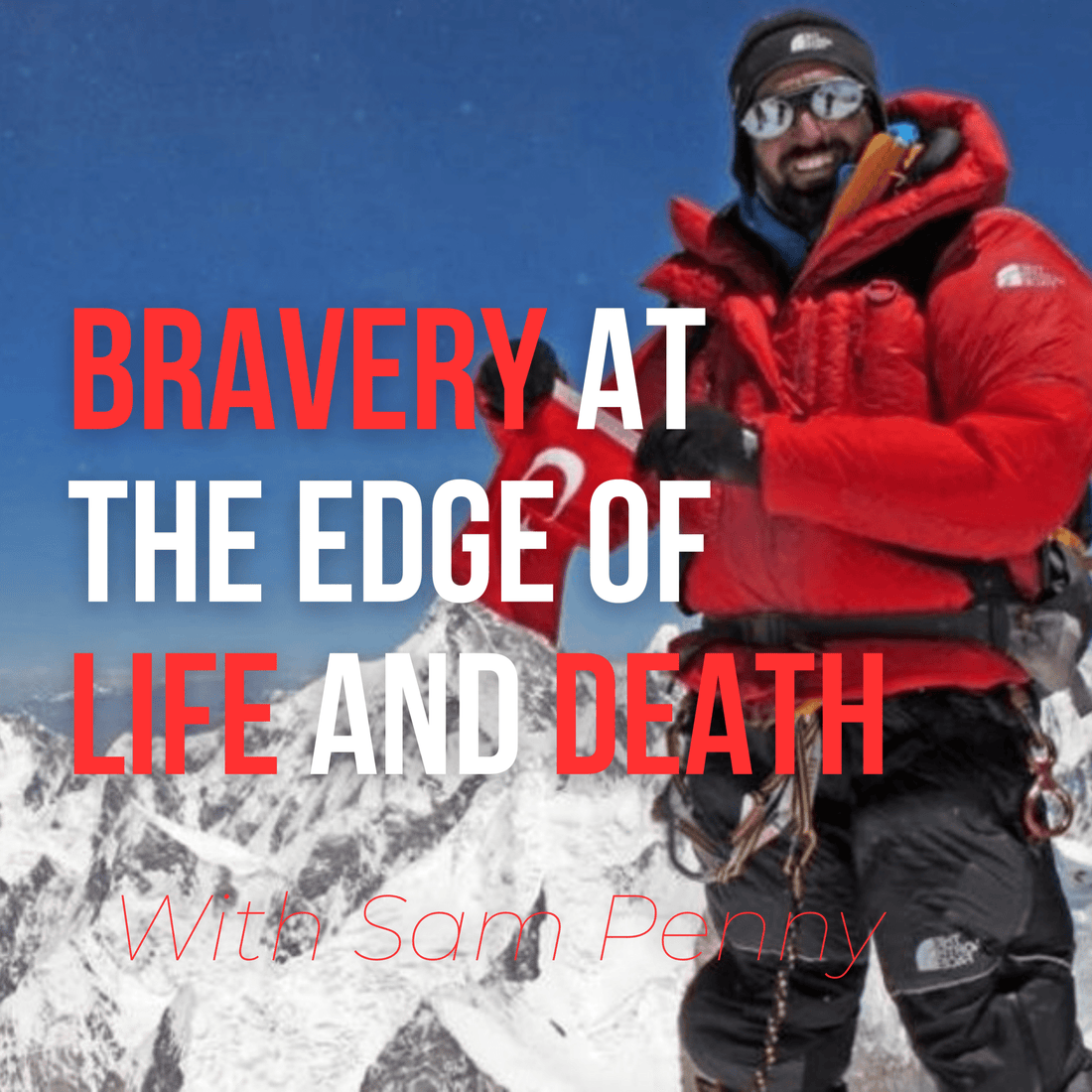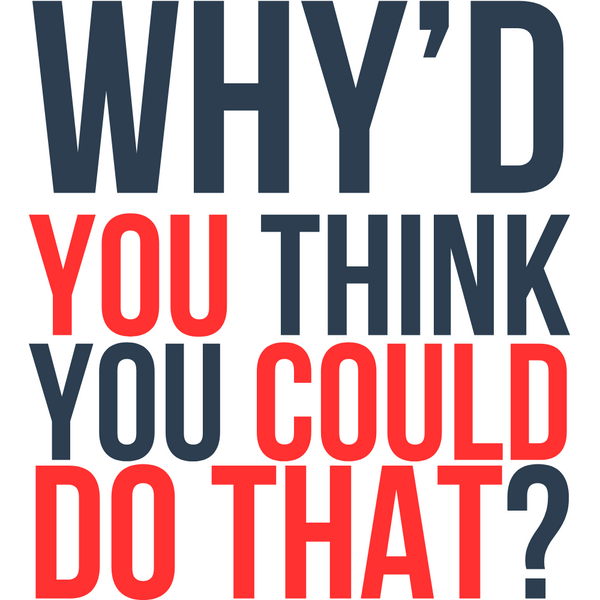
Andrew Lock: Bravery at the Edge of Life and Death
Share
Fifty-knot winds. Minus forty. Breath that burns because there isn’t enough oxygen to keep you alive. You’re clinging to a ridge with four thousand metres of air beneath your boots while someone nearby is slipping toward death. Do you push on for the summit—or stop to save a life? Andrew Lock has faced that choice more than once—and still became the only Australian to stand on the summit of all fourteen 8,000-metre peaks. This long-form feature—drawn from Andrew’s conversation with Sam Penny on Why’d You Think You Could Do That?—explores the moments, mindsets and methods behind a career defined by courage, restraint, and step-by-step grit.
It’s not just about mountains. It’s about what happens when fear shows up—and you keep moving anyway.
By Sam Penny · · Read time: ~17 minutes



Ordinary First — A Restless Kid & the Outdoor Habit
Andrew describes himself as “pretty average, but restless.” Scouts and school outdoor clubs became outlets for that energy. He loved any trip where the outcome was uncertain—when gear failed, weather turned and the plan demanded improvisation. Those early hikes and camps planted a fascination with risk and reward that later became a profession.
A Country Cop & a Slide Night That Changed Everything
After studying agriculture and finding the career uninspiring, he joined the police. A posting to Wagga Wagga brought a quieter pace—until one night in 1985, when mountaineer Greg Mortimer visited a local pub to present slides from the first Australian ascent of Everest. Twenty people turned up. One of them was Andrew Lock. Within hours, he knew: he’d climb Everest himself.
He joined a climbing club, spent every spare day on rock, and every holiday in New Zealand learning mountaineering. What began as curiosity became obsession.
Everest 1991 — Frostbite, a Flat Battery & the First Turnaround
Six years of training led to his first Everest expedition: four climbers, no Sherpas, no oxygen, and minimal fixed rope. Mid-summit push, his partner’s headlamp died and his hands froze. Lock faced a choice: lend the only light and risk both lives, or turn back. He turned back.
That aborted climb seeded the ethos he’d follow for decades: success measured by decisions, not flags on peaks.
Fear Management at Altitude — Accept It, Park It, Climb On
Lock learned early that courage isn’t the absence of fear; it’s containment. Fear acknowledged and filed to one side keeps you functional. “Either accept it or go home,” he says. “I preferred not to go home.” That mindset—emotional control under duress—became his survival edge.
K2 — Storms, Loss & Dragging a Dying Climber Down
K2 in 1993 was baptism by blizzard. Joined by elite Russian climber Anatoli Boukreev, Lock faced weeks of storms. They climbed when others hid, positioning themselves for a brief weather window. Two teammates died on descent. Lock then found a Swedish climber collapsing from cerebral edema at 8,000 metres. He tied a rope, half-dragged, half-walked him 700 metres down to safety.
The Purist’s Line — No Oxygen, No Sherpas, No Excuses
Lock rejected both bottled oxygen and hired porters. To him, purity mattered more than applause. “If I can’t climb it under my own steam, that’s fine—I’ll turn back.” The discipline brought failure as often as success, but each retreat built the judgment that would keep him alive through sixteen years of Himalayan extremes.
Annapurna — The Mountain He’d Never Step On Again
Annapurna, statistically the world’s deadliest 8,000-metre peak, nearly broke him. Two attempts, both under avalanching ice cliffs, ended in terror. “We were climbing over the debris of one avalanche trying to beat the next one down,” he recalls. He summited—but vowed never to return. “Everest I’d go back to tomorrow because it’s fun. Annapurna? Never again.”
A Cornice & a Rock Step That Rewired His Career
On Gasherbrum IV, alone and unroped, Lock fell through a cornice and caught himself on his elbows above a 3,000-metre drop. Moments later he faced a vertical rock step. Looking down, he saw his tent tiny on the glacier below and heard every alarm in his brain telling him to retreat. Instead he paused, analysed risk versus fear, and realised the climbing was within capability. He pushed on—and that decision reframed his entire philosophy: calculated risk, not avoidance, unlocks growth.
All 14 by 2009 — Why the Summit Isn’t the Finish Line
After sixteen years, he stood atop Shishapangma, his fourteenth 8,000-metre peak. Only a handful of humans had ever done it; none were Australian. Yet instead of euphoria came anticlimax. “Had there been twenty-eight 8,000-metre peaks, I’d have kept climbing.” Achievement, he realised, is temporary. Purpose lives in the climb itself.
After the Peaks — Sailing, Antarctica & Alaska in the Dark
Post-Himalaya, Lock swapped crampons for keels. He raced Sydney-Hobarts, then sailed to Antarctica to climb unnamed peaks from sea ice. Later he attempted a winter traverse of Alaska’s Brooks Range—temperatures far colder than any Himalayan summit, and perpetual darkness north of the Arctic Circle. He failed three times. “Got spanked,” he laughs. Then he moved to motorbike expeditions through Central Asia, still chasing edges, still learning from risk.
What Bravery Really Means for the Rest of Us
Most of us will never face 8,000 metres or minus-forty winds. But we all face moments that demand courage—hard conversations, bold career shifts, the risk of trying again. Lock’s definition of bravery is simple: stepping into the unknown despite fear, with enough self-belief to trust it will work out. “We’ve become too comfortable,” he says. “Adventure—risk—is what makes us feel alive.”
The Brave Five — Quickfire
Most ordinary thing he misses on expedition? Fresh fruit—“There’s never fruit at 8,000 metres.”
First thing he does back home? A long hot shower—“After weeks of cold-bucket washes.”
Advice to younger Andrew? Don’t fear leaving the safe path; that risk becomes your best story.
Ritual that grounds him? A gin & tonic on the flight out and a beer on the flight home—the mental line between worlds.
When did he need bravery most? “Taking that first step into the unknown. The rest follows.”
Listen & Explore the Guest Hub
Listen on your favourite platform or explore more quotes, photos and resources on Andrew’s Guest Hub.
